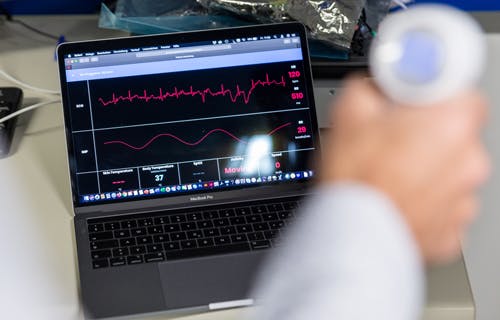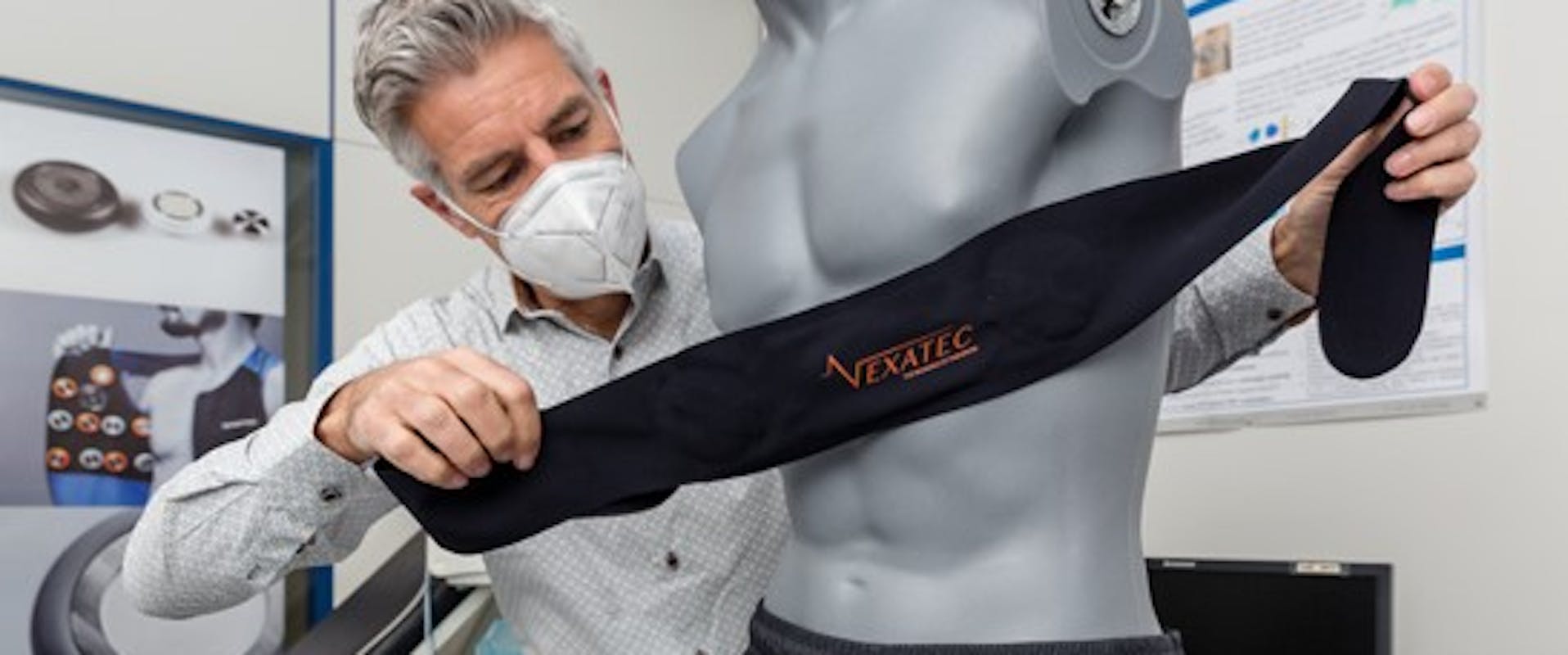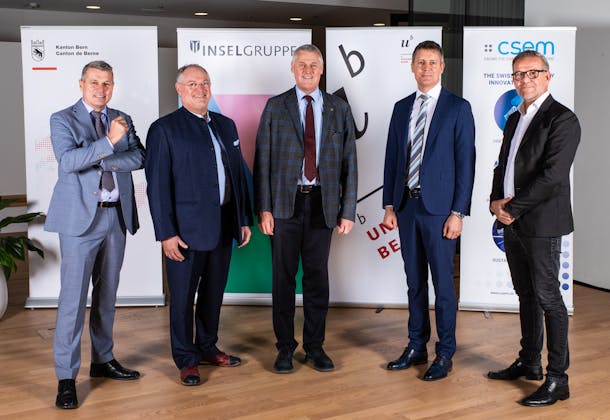
Under a project being carried out jointly by Vexatec (project lead), EOS (an Italian company specialized in system integration) and CSEM, engineers are working hard to ease the burden. They have developed a device consisting of light, comfortable sensors that Covid-19 patients can wear and allow doctors to track their vital signs. The sensors are incorporated into a CSEM-designed chest belt and take continual readings of a patient’s heartbeat, breathing rate and body movements. The system also includes wireless devices that periodically measure the patient’s blood oxygen-saturation levels (SpO2) and skin temperature.

Dry-electrode sensors
The belt contains two sensors on each side that are placed directly on the patient’s skin. Each sensor contains all the electronics needed for signal processing. The data are sent to the patient’s smartphone via Bluetooth and subsequently to a cloud platform where the patient’s health-care team can view them. A smartphone app is also available for doctors.
“Our system can perform accurate electrocardiograms that cardiologists can work with directly,” says Pascal Heck, the project head at CSEM. Another advantage to COMO is that it employs dry-electrode sensors, which are more comfortable for patients to wear and easier to remove, such as when the patient wants to take a shower. “The electrodes usually used in ECGs are adhesive and can irritate the skin. We decided to use dry electrodes made of stainless steel and then develop the necessary electronics to achieve the same signal quality as doctors get in a clinic, but with less irritation for patients,” says Heck.



